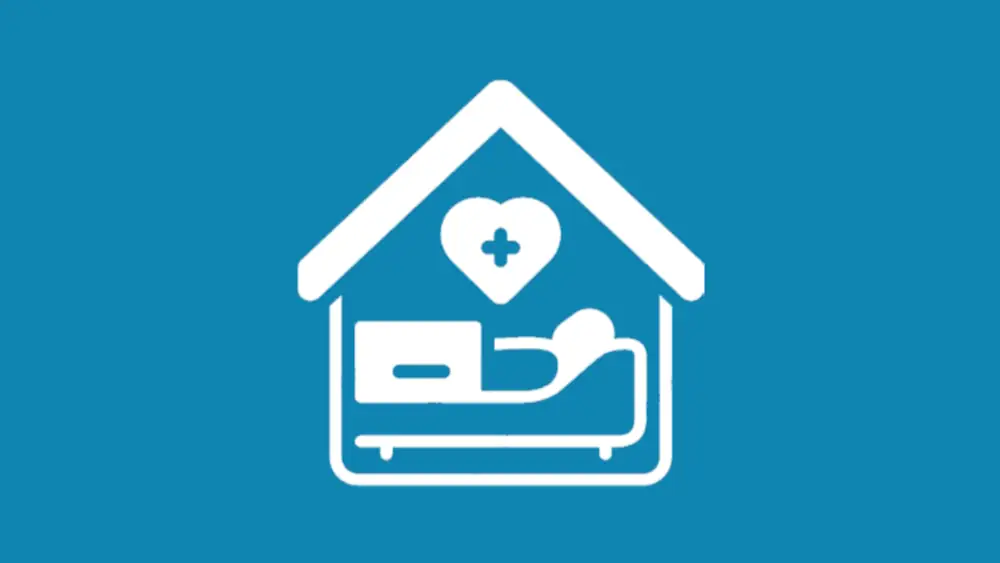Enhance Patient Engagement

AMGA Goal
Incentivize and empower patients to make informed decisions about their healthcare by designing care delivery and financing systems that eliminate access barriers and promote preventive care.
AMGA members recognize that meaningful patient engagement is critical to improving health outcomes, enhancing patient satisfaction, and increasing overall healthcare efficiency. Effective patient engagement strategies are essential to encouraging patients to take an active role in their health, adhere to treatment plans, and adopt healthier lifestyles.
To achieve this goal, AMGA recommends that Congress:
Offer financial incentives to Medicare patients for healthy behaviors
Provide modest financial incentives, such as premium reductions or rewards, for participating in preventive health activities such as exercise programs or dietary improvements. These incentives can drive sustained behavior change, improve clinical outcomes, and reduce the long-term burden of chronic disease.
Affordability remains one of the most significant barriers to healthcare access in the United States. High copayments, out-of-pocket costs, and the absence of financial incentives deter patients from seeking care or following through on treatment plans, ultimately leading to poorer health outcomes and higher systemwide costs. Aligning financial incentives to support prevention and chronic disease management is essential to improving outcomes and reducing avoidable high-cost utilization.
Payment and care delivery structures can either support or deter patient engagement. Cost-sharing requirements and the fear of unexpected bills disproportionately affect patients with chronic or complex conditions. According to a study published in the Journal of Internal Medicine, 37.7% of participants cited concerns about cost as a reason for avoiding care.1 To overcome these barriers, policymakers must implement payment and care delivery reforms that align with patient-centered care and promote sustained engagement, the hallmarks of high-value care.
Currently, financial incentives for patient engagement in traditional Medicare are limited and largely indirect, except in the Medicare Shared Savings Program (MSSP). These MSSP incentives generally offer direct financial rewards capped at $20 for primary care services.2 By contrast, Medicare Advantage (MA) plans and private insurers commonly offer tangible rewards to patients, including gift cards, reduced premiums, or waived copays for participating in wellness-focused activities, such as physical exams, vaccination programs, or even gym memberships.
To align traditional Medicare with the engagement structures seen in MA and commercial insurance, Congress should authorize direct financial incentives for Medicare beneficiaries who take proactive steps to improve their health. These incentives could mirror existing MA incentives by including lower cost-sharing, reduced premiums, or rewards for completing preventive screenings, participating in chronic disease management programs, or adopting healthy lifestyle changes.
Waive Medicare cost-sharing requirements for chronic care and chronic care management services
Eliminate out-of-pocket costs for Medicare beneficiaries with chronic conditions. Removing financial barriers would increase engagement in care and improve disease management. This would especially benefit low-income seniors, reducing disparities in access and care outcomes.
Under traditional Medicare, beneficiaries are responsible for deductibles, coinsurance, and copayments for most services. While some preventive services—such as screenings for cancer, diabetes, and heart disease—are exempt from cost-sharing, patients still incur costs for necessary follow-up tests and ongoing care.
These costs can be particularly burdensome for individuals with chronic conditions or complex healthcare needs. Medicare Part B’s structure stands in contrast to the private insurance market, where insurers more frequently employ financial incentives such as reduced premiums and lower cost-sharing to promote patient engagement.
AMGA providers report that patient engagement improves when cost-sharing requirements do not serve as an obstacle to care. Reducing financial barriers can increase uptake of preventive services, follow-up visits, and chronic disease management —key elements of effective care delivery.
The U.S. Preventive Services Task Force (USPSTF) plays a vital role in guiding preventive care through evidence-based recommendations on screenings, counseling, and services. Under the Affordable Care Act (ACA), private health plans are required to cover USPSTF-recommended preventive services with no cost-sharing.3 However, the USPSTF’s scope focuses primarily on early detection and risk reduction, rather than ongoing management and treatment of chronic diseases.
While early diagnosis is essential, chronic conditions such as diabetes, hypertension, and heart disease require continuous, coordinated care. Effectively addressing chronic disease demands broader strategies that include coordinated care teams, patient education, lifestyle support, and access to affordable treatment.
AMGA views the USPSTF recommendations as a valuable foundation, but emphasizes the need for policies and care models that prioritize long-term disease management. AMGA recommends eliminating cost-sharing for chronic disease management services, including regular screenings, follow-up appointments, and preventive interventions. By reducing costs for patients with chronic conditions, we can increase engagement and reduce avoidable, high-cost health events.
Medicare reimburses clinicians for non-face-to-face chronic care management (CCM) under a separately billable code in the Medicare Physician Fee Schedule (MPFS) for beneficiaries with two or more chronic conditions. However, any value a beneficiary receives is offset by a 20% coinsurance obligation for patients, establishing an unexpected and unavoidable barrier to care.
Out-of-pocket expenses often discourage patients from consenting to CCM services. By removing cost-sharing barriers, Congress would incentivize patients to participate in regular care coordination, medication management, and preventive interventions—reducing the risk of costly complications and hospitalizations. Eliminating CCM cost-sharing also aligns with high-value care principles that favor proactive management over reactive treatment. AMGA previously endorsed the Chronic Care Management Improvement Act of 2023, which would waive cost-sharing for CCM services.4
Permanently remove geographic and originating site restrictions for telehealth
Permanently codify the Medicare waiver of geographic and originating site limitations to ensure broad, equitable access to telehealth services—especially in rural and underserved communities. Continued virtual access promotes care continuity and supports patients with mobility or transportation challenges.
Technological advancements offer powerful opportunities for patients to engage with healthcare providers from the comfort of their homes. As noted in the “Improving Health Outcomes through High-Value Care” section of this report, transportation remains a major barrier to care—especially for those in rural or underserved areas, individuals with limited mobility, or people without reliable vehicle access. Transportation-related challenges often lead to missed appointments, increased emergency department use, and higher out-of-pocket costs. These financial and logistical burdens can be a disincentive for patients from seeking care altogether.
Telehealth and digital health tools can help bridge these gaps by improving accessibility and reducing travel-related costs. Telehealth allows patients to connect with healthcare providers through video calls, phone consultations, or messaging apps— facilitating continuity of care without the need for physical visits. For patients in rural communities, telehealth can connect them with specialists or healthcare providers otherwise unavailable locally. This access is vital for individuals who would otherwise need to travel long distances for specialized care.
Fund digital health navigators to bridge the digital divide
Reimburse medical groups and health systems for employing digital health navigators who assist patients with technology. These navigators can help patients use telehealth platforms, understand health data, and engage with remote monitoring tools. Funding for navigators would ensure technology is an enabler, not a barrier.
To enhance patient access and engagement in digital healthcare, reimbursing medical groups and health systems for employing digital health navigators is essential. These navigators assist patients in utilizing telehealth platforms, understanding health data, and engaging with remote monitoring tools, ensuring that technology serves as an enabler rather than a barrier. By providing guidance on digital tools, navigators help patients overcome challenges related to digital literacy and connectivity, particularly in underserved communities. This support not only facilitates the effective use of telehealth services, but also promotes equitable access to care.
Digital health tools, including wearable devices and mobile health applications, also enable remote monitoring of vital health metrics such as blood pressure, glucose levels, and heart rate. This continuous monitoring allows for early detection of health issues and timely interventions, reducing the need for frequent in-person visits and associated costs. Remote Patient Monitoring (RPM) further enhances chronic disease management by providing real-time data to healthcare providers, supporting better treatment adherence, reducing hospitalizations, and improving care coordination. Integrating digital health navigators into care teams, alongside the adoption of RPM technologies, can significantly improve clinical outcomes and make healthcare more affordable and accessible for all patients.
Mandate data sharing from commercial payers to providers
Require commercial insurers to provide timely access to claims data. Improved data sharing enables providers to better coordinate care, close care gaps, and manage population health. This would align payers and providers around shared value-based goals.
To deliver high-quality, coordinated care, providers need access to commercial claims data. These data—submitted by insurers— offer a comprehensive view of a patient’s healthcare utilization, treatments, and cost patterns across settings. Unlike electronic health records, which reflect only the care delivered by a specific provider, claims data capture services performed elsewhere, such as preventative screenings, diagnostic tests, and emergency care. AMGA’s annual risk survey consistently identifies lack of access to claims data as an obstacle to high-value care.5
Incorporating these additional data would offer a more complete, “real-time” picture of the patient’s health journey. This would reduce unnecessary procedures, minimize duplicative testing, and lower the overall cost of care.
Claims data also enable providers to go beyond episodic care and manage care holistically. They reveal past diagnoses, medications, and interactions with other healthcare professionals—critical for managing patients with complex or chronic conditions. With this full picture, providers can identify care gaps, such as missed preventive screenings, and foster shared decision making with both patients and clinicians to reduce the risk of conflicting treatments or adverse medication interactions.
Beyond individual care, claims data strengthen population health management and support high-value care models. They enable providers to analyze trends, predict risks, and allocate resources effectively. This data-driven approach improves patient outcomes while supporting system-wide efficiency and cost containment.
“Patients who have been receiving care management services for free are reluctant to start paying. Patients also are apprehensive about their copayment for this program and are reluctant to enroll.”
— Beth Averbeck, MD, FACP, Senior Medical Director, Primary Care, HealthPartners
Conclusion
Fostering meaningful patient engagement is key to improving patient outcomes and transitioning to a high-value care system. AMGA believes this requires a comprehensive strategy built around aligning financial incentives and eliminating structural barriers. Key challenges—such as health literacy disparities, lack of data transparency, and unequal access to care—must be addressed.
Congress must recognize how financial burdens, confusing billing practices, and restricted access to information hinder patients from fully engaging in their care. By promoting financial incentives, expanding digital access, improving transparency, and enhancing patient education, lawmakers can modernize the healthcare system and empower patients to become active participants in their health.

Enhance Patient Engagement
Empower patients to take an active role in their healthcare decisions.

Improve Health Outcomes
Address disparities to ensure all populations receive high-quality care.

Protect Patient Dignity at End of Life
Promote compassionate care that respects patient preferences.

Remove Regulatory and Statutory Barriers
Reduce administrative burdens that impede care delivery.

Support Practices Serving Rural and Underserved Populations
Ensure equitable resources and support for all providers.

Ensure the Long-Term Sustainability of High-Value Care
Establish a payment model that ensures long-term viability for providers.
For more information on the AMGA MACRA and Value-Based Care Task Force Recommendations
1 Taber JM, Leyva B, Persoskie A. Why do people avoid medical care? A qualitative study using national data. J Gen Intern Med. 2015 Mar;30(3):290-7. doi: 10.1007/s11606-014-3089-1. Epub 2014 Nov 12. PMID: 25387439; PMCID: PMC4351276
3 Sec. 2713 of the Affordable Care Act
5 2025 AMGA Issue Brief on Access to Claims Data available at www.amga.org/getmedia/817d6dc2-bc6a-4179-a18e-e052935bfdbd/2025-access-to-claims-data-issue-brief.pdf